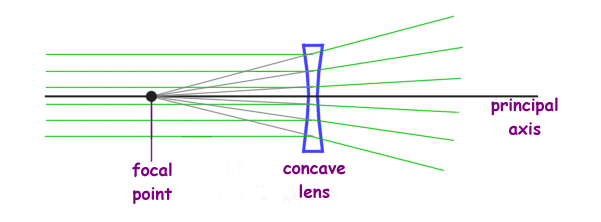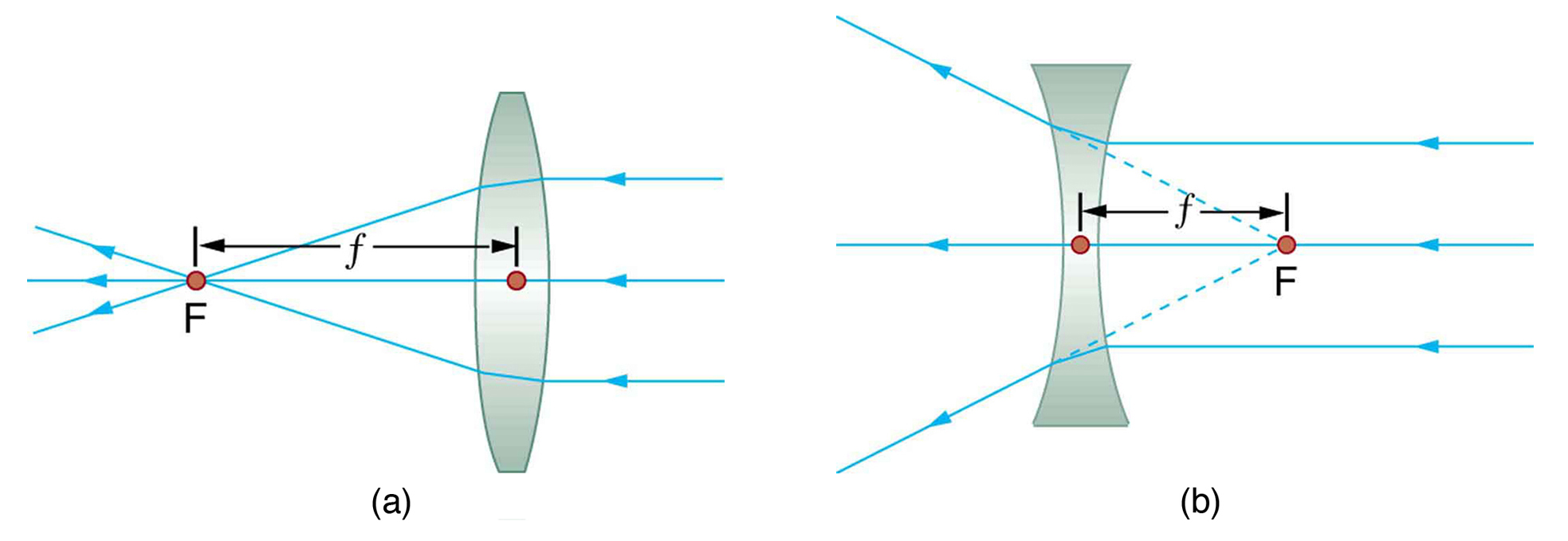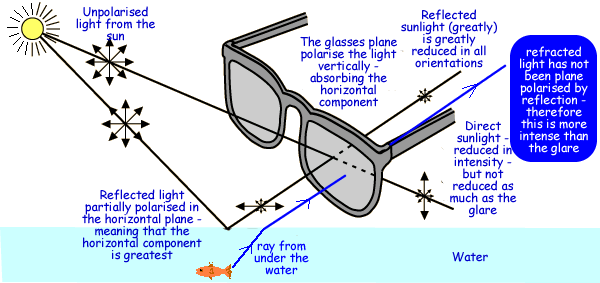how do glasses work physics
Now when they project the film they have a very powerful projector that projects two images side by side. This way the light waves reflected by a surface at a certain angle get blocked out.

Physics For Kids Lenses And Light
There are three types of cones.

. But how do we get from light bending in water. When you have both eyes open you dont need the bobbing as you already have input from two different perspectives and a brain well versed in interpreting it. The way light bends when it goes from air to a different material such as water or glass is called refraction.
This can be seen in the figure below. The viewer wearing linearly polarized glasses can see only one image in each eye the one which has same polarizing angle. The eyeglass lens is simply used to create an image of the object at a distance where the nearsighted person can see it clearly.
You will be amazed at how complex and sophisticated a simple pair of dark glasses can be. In a movie theater the reason why you wear 3-D glasses is to feed different images into your eyes just like a View-Master does. The screen actually displays two images and the glasses cause one of the images to enter one eye and the other to enter the other eye.
Whereas someone not wearing glasses can see clearly objects that fall between their near point and their far point someone wearing glasses can see images that fall between their near point and their far point. A magnifying glass is usually a convex lens a lens that bulges outwards made of either glass or plastic. Anti reflective coating also known as Anti-glare simply lets the light go through.
Light hits the glass at an angle and it. In 3D glasses one lens is one colour and the other is another colour. Convex lenses correct nearsightedness by refracting the light toward the bottom and the top of the lens so.
The red and blue lenses filter the two projected images allowing only one image to enter each eye. The lenses control what each eye sees by filtering the light going to each eye only letting certain wavelengths pass. When it reflect from your eyeglasses lenses it creates glare that bother you to see other objects clearly.
These glasses are used when two images are projected superimposed onto the same screen through orthogonal polarizing filters Usually at 45 and 135 degrees. Glasses are cut to change the focal length of the light entering the eye so it hits the focal point properly and the wearer can see without blurring. Students use the equation for Malus.
Polarized sunglasses work by having a special molecular structure in the lenses. The glasses would let one colour pass through one eye and the other through the other eye. How Do Glasses Work.
The blue cones usually operate disjointly whereas for most people the red and green cones might have working regions that overlap. For glasses that correct for near sighted people this also means a reduction in size of the image on the retina. With this orientation of the lenses the light waves reflected by a horizontal surface like water windshields or the street will not glare at you anymore.
The lens of the eye will need to compensate for closer objects. Students learn about the science and math that explain light behavior which engineers have exploited to create sunglasses. Glasses with Polarizing Filters.
The reason for this is that youve got two eyes looking at the world and so youre getting two images of the world reaching your. For a full explanation of how it works please see our detailed article on lightRefraction is the key to how lenses workand lenses are the key to binoculars telescopes and glasses. In most cases the orientation of the polarized lenses is vertical.
One of the images is very slightly displaced from the other one. How binoculars use lenses. This in turn becomes a measure of how far away an object is.
They examine tinted and polarized lenses learn about light polarization transmission reflection intensity attenuation and how different mediums reduce the intensities of various wavelengths. By bending light as it enters your eye. Images distort when the eye cannot focus onto the retina but lenses can refract light to compensate.
Any object reflect light from it. This made sure that both our eyes saw the two different images that our brain could interpret as 3D. Im not talking about the image height.
In these there are two types Linearly Polarized Glasses. For contacts which are much closer to the lens the size distortion is much less. You will also learn how light works and see why light in certain situations can make sunglasses absolutely essential.
S M and L and they are responsible for identifying the colors blue green and red respectively. Well analyze the different styles and look at the technology behind the different lens compositions. The third way your brain percieves distance is it gauges the lenses in your eye.
Our eyes detect colors using cones. With the glasses back on your brain merges those images to create the perception of depth. Anti-Reflective coating lets this light reflected from the obj.

Figure 2 Types Of Lenses Lab Activities Physics Lessons Microscopy

Image Formation By Lenses Physics

Optics Optical Philosophy Essays Physics

8 Notes On Optics And Frames Boxing And Edging Eye Q Optometry Optical Optician Training

Rbse Solutions For Class 12 Physics Chapter 10 Alternating Current Rbsesolutions Rbsesolutionsforclass12physicschapter10 Alternating Physics Class Solutions

Optics Optical Philosophy Essays Physics

New Ultra Sight Technology Integrated Into Polaroid Lenses What Stands Achieved Is A Flawless Unison Of High Performing Materials Eye Facts Optometry Polarized

Minute Physics Has Created A Video Detailing An Easy Way To Temporarily Focus Your Vision When You Don T Have Glasses Or Contact Len The Retina Eyes Vision Eye

Converging And Diverging Lens If One S Eyeball Is Too Long Or Too Wide The Light Rays Will Not Meet A Science Lessons Elementary Learn Physics Basic Physics

Wave Length Color Google Search Light Wave 5th Grade Science Light






